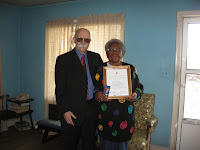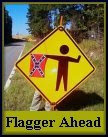"The Forgotten Black Confederate Soldier" What we have been taught and come to believe has been edited, expurgated, abridged, censored and just plain rewritten for more than 140 years.
The words of Irish-born Confederate Major General Patrick Cleburne from his January, 1864, letter which proposed the mass emancipation and enlistment of Black Southerners into the Confederate Army express profoundly accurate prophecy:
Every man should endeavor to understand the meaning of subjugation before it is too late...It means the history of this heroic struggle will be written by the enemy; that our youth will be trained by Northern schoolteachers; will learn from Northern school books their version of the war; will be impressed by the influences of history and education to regard our gallant dead as traitors, and our maimed veterans as fit objects for derision...The conqueror's policy is to divide the conquered into factions and stir up animosity among them... ....It is said slavery is all we are fighting for, and if we give it up we give up all. Even if this were true, which we deny, slavery is not all our enemies are fighting for. It is merely the pretense to establish sectional superiority and a more centralized form of government, and to deprive us of our rights and liberties.
In 2000 the $37 Million movie Ride With the Devil was suppressed in distribution and offered in only 200 theaters for a limited three-day engagement despite the fact that it was directed by Oscar-winning director Ang Lee and had received many excellent reviews. It was suppressed by its distributor, USA Films, because it factually portrayed a Black Confederate guerrilla fighting with Confederate Bushwhackers in the Kansas-Missouri operations. The video release of the movie was delayed for two months to allow removal of the image of the Black Confederate from the cover art. The character was based faithfully on Free Black John Noland who rode with Quantrill as a scout and spy.
Black Southerners fought alongside white, Hispanic, Indian, Jewish and thousands of foreign-born Southerners. They fought as documented by Union sources:

Frederick Douglass, Douglass' Monthly, IV [Sept. 1861,] pp 516 - "there are at the present moment many colored men in the Confederate Army - as real soldiers, having muskets on their shoulders, and bullets in their pockets, ready to shoot down loyal troops, and do all that soldiers may do to destroy the Federal government...There were such soldiers at Manassas and they are probably there still."
"Negroes in the Confederate Army," Journal of Negro History, Charles Wesle, Vol. 4, #3, [1919,] 244-245 - "Seventy free blacks enlisted in the Confederate Army in Lynchburg, Virginia. Sixteen companies of free men of color marched through Augusta, Georgia on their way to fight in Virginia."
"The part of Adams' Brigade that the 42nd Indiana was facing were the 'Louisiana Tigers.' This name was given to Colonel Gibson's 13th Louisiana Infantry, which included five companies of 'Avegno Zouaves' who still were wearing their once dashing traditional blue jackets, red caps and red baggy trousers. These five Zouaves companies were made up of Irish, Dutch, Negroes, Spaniards, Mexicans, and Italians." - Noe, Kenneth W., Perryville: This Grand Havoc of Battle. The University of Kentucky Press, Lexington, KY, 2001. [page 270]
From James G. Bates' letter to his father reprinted in the 1 May 1863 "Winchester [Indiana] Journal" [the 13th IVI ["Hoosier Regiment"] was involved in operations around the Suffolk, Virginia area in April-May 1863 ] - "I can assure you [Father,] of a certainty, that the rebels have negro soldiers in their army. One of their best sharp shooters, and the boldest of them all here is a negro. He dug himself a rifle pit last night [16 April 1863] just across the river and has been annoying our pickets opposite him very much to-day. You can see him plain enough with the naked eye, occasionally, to make sure that he is a "wooly-head," and with a spy-glass there is no mistaking him."
The 85th Indiana Volunteer Infantry reported to the Indianapolis Daily Evening Gazette that on 5 March 1863: "During the fight the [artillery] battery in charge of the 85th Indiana [Volunteer Infantry] was attacked by two rebel negro regiments.
After the action at Missionary Ridge, Commissary Sergeant William F. Ruby forwarded a casualty list written in camp at Ringgold, Georgia about 29 November 1863, to William S. Lingle for publication. Ruby's letter was partially reprinted in the Lafayette Daily Courier for 8 December 1863: "Ruby says among the rebel dead on the [Missionary] Ridge he saw a number of negroes in the Confederate uniform."
Federal Official Records, Series I, Vol XVI Part I, pg. 805: "There were also quite a number of negroes attached to the Texas and Georgia troops, who were armed and equipped, and took part in the several engagements with my forces during the day."
Federal Official Records Series 1, Volume 15, Part 1, Pages 137-138: "Pickets were thrown out that night, and Captain Hennessy, Company E, of the Ninth Connecticut, having been sent out with his company, captured a colored rebel scout, well mounted, who had been sent out to watch our movements."
Federal Official Records, Series I, Vol. XLIX, Part II, pg. 253 - April 6, 1865: "The rebels [Forrest] are recruiting negro troops at Enterprise, Miss., and the negroes are all enrolled in the State."
Federal Official Records, Series I, Vol. XIV, pg. 24, second paragraph - "It is also difficult to state the force of the enemy, but it could not have been less than from 600 to 800. There were six companies of mounted riflemen, besides infantry, among which were a considerable number of colored men." - referring to Confederate forces opposing him at Pocotaligo, SC., Colonel B. C. Christ, 50th Pennsylvania Volunteer Infantry, official report of May 30, 1862
"Sargt said war is close to being over. saw several negros fighting for those rebels." - From the diary of James Miles, 185th N.Y.V.I., entry dated January 8, 1865
Black Southerners also demonstrated loyalties based not on ownership, subservience or fear. The Confederate Burial Mound for Camp Morton, Indiana, at Indianapolis, Indiana, has bronze tablets which list the nearly 1200 Confederates who died at that camp. Among those names are 26 Black Southerners, seven Hispanic Southerners and six Indiaan Southerners.
At a time when those Black Southerners could have walked into the Camp Commander's office, taken a short oath and signed their name to walk out the gates free men obliged to no one they chose instead to stay even unto death. Your understanding of that choice is likely nonexistent.
Union soldiers robbed, raped and murdered Free Black and slave Southerners they had come to "emancipate." Union "recruiters" hunted, kidnapped and tortured Black Southerners to compel them to serve in the Union Army. At the Battle of the Crater white Union soldiers bayoneted retreating Black Union soldiers and the 54th Massachusetts was intentionally fired upon by Union Maine troops while assaulting Battery Wagner. The Federal Official Records and memoirs of the USCT document all of these war crimes.
Since the Civil War the United States flag has flown over a country that has continued attempted genocide against its Native Peoples with the able help of Black "Buffalo Soldiers," condoned the slavery of Orientals in California well into the 1880s, fought wars to maintain dominance over countries whose people were not white, and imprisoned its own citizens because of the color of their skin as they did with the Japanese-Americans in California from 1941-1945.
It is time that the misrepresentation which has come to be accepted as "history" is restored to its full measure and the positive and negative aspects of all parties exposed for the consideration of all Americans.
The Patriotist--LG















































